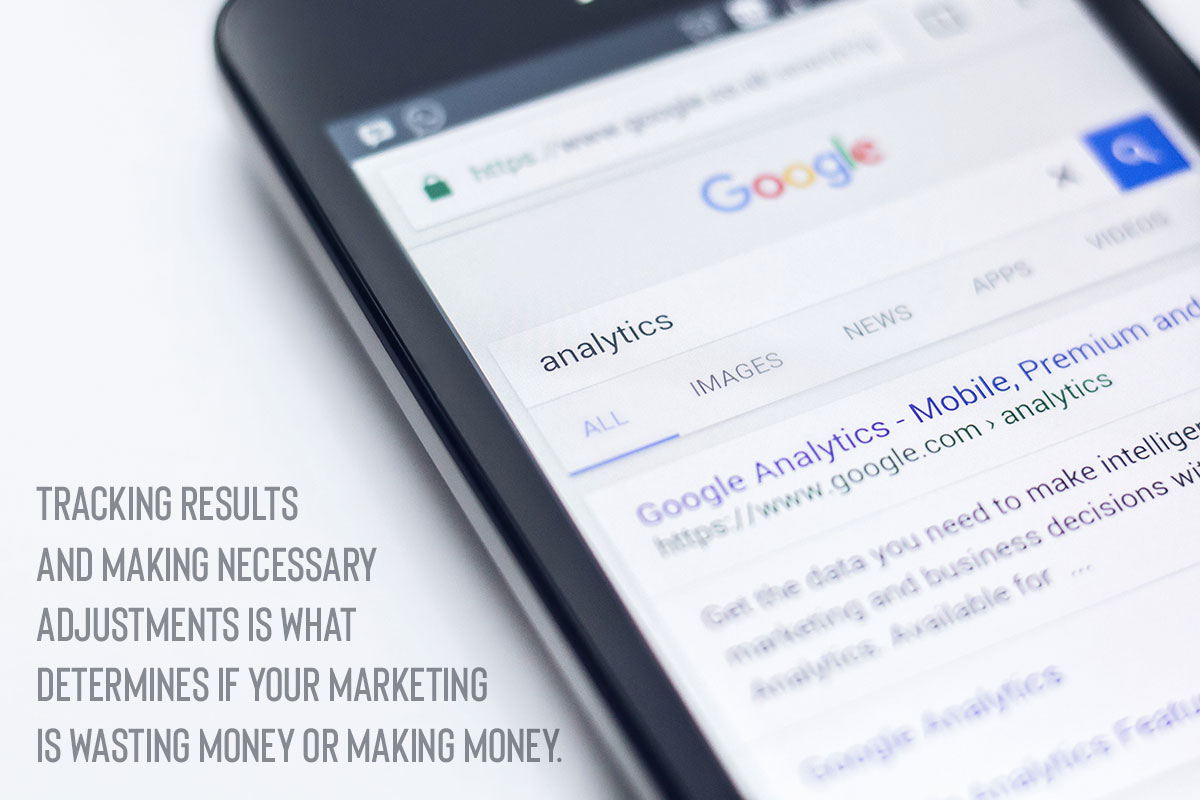There is no shortage of tips, tricks and hacks to help you squeeze every ounce of opportunity out of your mobile home marketing efforts.
But, while everyone is flocking to the latest marketing fad, important fundamentals often can get overlooked.
Whether you’re a retailer, community owner/operator or supplier to the industry, making a mistake in these marketing fundamentals will undermine results and waste your money.
After more than 20 years of helping national, regional and local organizations improve their marketing, there are seven core elements I’ve seen neglected repeatedly.
Seven marketing “sins” that can kill results and spoil sales opportunities.
Marketing Sin #1: Ineffective Signage
If you’re a retailer or community owner/operator, a portion of your annual sales depends on drive-by traffic.
So, it’s important to have signage that is capable of catching people’s attention. From not having enough signage to poorly designed signs, any mistake in this area will reduce the number of sales leads you attract.
Signage that is unreadable from a distance while traveling at posted highway speeds is one of the biggest mistakes I see companies make.
The design, typestyle, and colors you choose for your signs impact how effective they will be as a marketing tool.
Potential customers must be able to read your sign in one second or less as they drive down the road.
Think about your drive into work this morning. How many signs did you glance at, and how many did you spend time reading?
If you’re like most people, you barely pay attention to business signs as you drive, because your mind is occupied with other matters.

It’s the same for your customers. They’re flying down the road, rushing through their day.
So, you need to help them see you.
Make sure your signage is free of any object that would obstruct the ability to read it, and choose high-contrast colors for your signs to improve their visibility and readability.
Also, pick a color that contrasts well with the sign’s surroundings to help it stand out. Color selection can make your sign highly visible, or muddled and impossible to read.
Finally, when selecting typestyles for your sign, choose a font that is appropriate for the location.
On busy roads or highways with posted speeds above 35 mph, thick, bold type will be needed. The thicker type will make it easier for drivers to read your sign at a glance as they travel at posted speeds.
Pro tip: the font “Frutiger” was designed for airport signage as a typeface that is clear and easy to read from a distance, making it an ideal choice for signs.
Marketing Sin #2: Websites that Don’t Convert
Much like a sign’s job is to capture leads from drive-by traffic, the purpose of your website is to capture sales leads from internet traffic.
A well-designed, conversion-optimized mobile home website can generate a consistent flow of sales leads reliably every month. If that’s not happening for you, it’s time to fire your website and get a new one.
Let’s start with the way your website looks.
How important is the visual appeal?
According to research by Carleton University, visitors decide if they like your website or not within the first 1/20th of a second of landing on it. And that decision determines if they stay on your site or leave.
Further studies by Stanford show that 75 percent of consumers make a judgment about a company’s credibility based on the design of their website.
So, the visual appeal of your site has a direct connection to how effective it will be as a source of new sales leads.

Beyond visual appearance, other factors can sabotage your site’s effectiveness.
Technical issues like slow website loading speeds, images that do not load correctly, or features that do not work will cause website visitors to leave.
And once they have a bad experience on your website, 88 percent of them will never return, according to a 2010 study published by econsultancy.com.
Even when your website looks great and is functioning at peak efficiency, there are things you can do to improve the number of conversions you get.
Some of them, like placing your phone number in the top-right corner of your site, are simple adjustments that produce immediate results.
Another excellent technique for improving results from your website is to use social proof.
Social proof is evidence from past customers that doing business with you will be a good experience.
By adding testimonials or reviews to your website, you’re adding social proof. But if you choose to add testimonials to your site, be sure to follow FTC rules for the use of endorsements and testimonials in advertising.
Another option for social proof is software that displays a small pop-up in the corner of your website, showing visitors that other people are filling out your online forms, which encourages them to do the same.
Regardless of how you do it, adding social proof helps reassure potential buyers and builds trust.
Your website is the virtual doorway to your business. It is the physical, albeit digital, location of your business online.
So, put as much care and attention into your website as you do your actual sales center, lobby, or any other customer-facing area of your business.
Marketing Sin #3: Poor Online Visibility
It’s no secret that the internet is the dominant media platform worldwide.
According to research firm BIA Advisory Services, 97 percent of consumers use the internet to find local businesses. 72 percent visited a company within five miles after doing a local search online, according to a 2016 study done by Wordstream.
Having a well-planned online marketing strategy is the key to generating a predictable flow of new sales leads every month.
There are six components to a well-balanced online marketing strategy. They are advertising, search visibility, reputation, social presence, your website, and a tracking and follow-up system.
Let’s start with how visible you are online.

Getting found on search engines like Google is a complex mix of content, technical factors, and optimization that all affect your position in search results. However, there are simple steps you can take to improve your chances of being found.
First, make sure your business name, address and phone number are correct and consistent anywhere they are listed online. Those online listings should exactly match the name, address and phone number on your website.
Also, while you’re checking your business listings online, remember to check how your business is listed in Google. You can do this by searching your business or community name and looking at what appears to the right of the search results.
If you see a box of information about your business, you have an existing Google My Business listing that you should check and update if necessary. However, if no information box appears when you search your name, then you need to create a Google My Business listing.
Increasing your visibility online includes having a presence on well-established, industry-related websites like MHVillage.com, where a lot of potential buyers spend time searching for homes.
Advertising in places that are already hot spots for buyers is a great way to get seen. And it’s an effective way to generate qualified sales leads as well.
How you appear in search results is only one aspect of online marketing.
Advertising, email marketing, having a well-managed social media presence, and video marketing also should be tools you regularly use to attract as many sales leads as possible.
Marketing Sin #4: Ignoring Reputation Management
Online reviews are becoming more influential in the buying process every year.
In 2017, Spiegel Research Center found that 95 percent of consumers check online reviews before making a purchase. Also, they discovered showing reviews for higher-priced products can increase your conversion rate by as much as 380 percent.
Reputation management is an area of online marketing that has the most significant impact on results because it is so influential in the sales process.
According to a 2017 study published by BrightLocal, 77 percent of consumers ignore online reviews posted more than three months ago. So even if you have excellent reviews, you still need to be proactive about acquiring more.

Also, if you have no reviews at all or more negative reviews than positive ones, doing nothing becomes even more detrimental. In 2016, ReviewTracker found that negative reviews drive customers away 94 percent of the time.
That same year, research by Fan and Fuel found that having no reviews caused 92 percent of consumers to hesitate on a purchase decision or delay it completely.
With online reviews, how you treat and respond to customers is on display for thousands of potential buyers to see. So, monitoring and improving your online reputation is one of the most powerful steps you can take to increase sales.
Marketing Sin #5: Not Tracking Results
One of the most common mistakes I’ve seen throughout my career is companies that have no system in place for tracking the results of their marketing.
Knowing which marketing vehicles are producing results, and which ones are not, reduces wasted advertising dollars.
It also helps you maximize your return on investment by showing you where the results are coming from, so you can shift your budget accordingly.
There are lots of ways to track results, including options that are automated.
For example, using call tracking numbers, like mhvDirect™, in the advertisements you run will give you a measurement of how many calls your ad generated, and will even let you record the calls for training purposes.
For walk-in traffic, you need to develop an internal process for registering visitors and collecting their information for future follow-up and marketing campaigns.

Installing Google Analytics will help you keep track of where the traffic to your website originates.
And tools like HotJar will show you what parts of your website people are clicking and record videos of people using your site, so you know how to improve it for better results.
Tracking the results of your marketing and making the necessary adjustments is what determines if your marketing is wasting money or making money, and prevents you from wasting homebuyer sales leads.
With a conversion-optimized campaign, every dollar you invest in online marketing should generate at least two dollars in return, doubling your investment.
Marketing Sin #6: Bad Brand Experiences
What kind of experience do prospective buyers have from sales introduction and first impression to the time they are no longer a customer? And how is that experience shaping their purchasing decision?
Many well-known elements go into a buyer’s experience with your brand, like how your sales staff greets visitors to your customer service policies.
However, the experience they have also is shaped by intangible details that trigger psychological responses and affect buying decisions.
For example, colors create both psychological and physical responses that can enhance or sabotage your brand.
The color blue, for instance, has been proven to reduce appetite. So, it would not be the right color for restaurant décor.
Other subtle elements that affect the buyer’s experience include common-sense things like, did your staff answer the phone when they called or did it go to voicemail?
Is your staff using paperwork and sales literature that is a copy of a bad photocopy? Or do they have professional-looking collateral that reinforces the buyer’s trust?

Are your model homes properly staged with inviting and purposeful interior design? Or is it a cold, empty shell that does not help the buyer picture themselves living there?
Also, is your office or sales center just a place to do paperwork? Or is it well-designed, with thoughtful point-of-sale displays that support your sales efforts with carefully planned visuals?
All of these factors come together in the buyer’s mind, and cause them to form opinions that affect their purchase decision: Do I like this salesperson? Will this home fit my family’s needs? Am I getting a good deal? Do I feel comfortable doing business with this company, or should I keep looking?
Marketing Sin #7: Lack of Follow-Up
After the initial contact with a customer, the real work of earning their business begins. Only a small percentage of potential buyers will make a purchase the first time they contact you.
It takes a structured sales follow-up process to engage more buyers and increase your sales conversion rate.
First, you need a defined process. Choose one that is easy to implement, and is used by everyone involved in the sales cycle.
Planning out the process is essential because it ensures consistency. It also helps you control the timing of follow-ups, so they build rapport instead of harassing prospects.

Like tracking marketing results, the sales follow-up process is often overlooked or poorly implemented.
A quick web search reveals many studies that say a sale is made only after five to 12 follow-up attempts. However, according to InsideSales.com, most salespeople give up after just two contacts.
And data collected by YesWare shows that 70 percent of salespeople stop after sending one email.
Persistence and patience are the keys to unlocking the results a good sales follow-up system can deliver.
The Devil is in The Details
Getting the details right in these seven fundamental areas of marketing manufactured homes will give you a solid foundation for results.
So, while everyone else is chasing marketing fads that ebb and flow with the tide of social media, give yourself a competitive advantage by doing the basics your competition ignores.
It’s an easy way to increase results without increasing your marketing budget.










